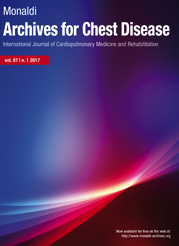Dynamic computed tomography in the diagnosis of tracheomalacia in asthmatic patients
All claims expressed in this article are solely those of the authors and do not necessarily represent those of their affiliated organizations, or those of the publisher, the editors and the reviewers. Any product that may be evaluated in this article or claim that may be made by its manufacturer is not guaranteed or endorsed by the publisher.
Authors
Dynamic computed tomography (CT) offers a non-invasive approach to diagnosing tracheomalacia, especially in asthmatic patients with varying severities of airway obstruction. This study aimed to assess the incidence of tracheomalacia in asthmatic patients using dynamic CT and its relation to asthma severity. A total of 60 asthmatic individuals, diagnosed based on the Global Initiative for Asthma 2021 criteria, participated in this cross-sectional study. Participants were split into three separate groups (mild, moderate, and severe) based on pre-bronchodilator forced expiratory volume levels. All patients underwent dynamic CT to evaluate tracheal collapsibility, and spirometry was performed to assess pulmonary function. Tracheomalacia was detected in 5 participants (8.3%). The groups showed a significant disparity in pre- and post-forced expiratory volume % (p<0.001) and the forced expiratory volume/forced vital capacity ratio (p<0.001). Additionally, the bifurcation cross-sectional area % expiration/inspiration was significantly lower in the tracheomalacia group (p<0.001), and the aorta cross-sectional area % expiration/inspiration also reported a significant reduction (p<0.001). Dynamic CT is a valuable diagnostic tool for identifying tracheomalacia in asthmatic patients. Although tracheomalacia was not directly related to asthma severity, further studies are needed to explore its potential causes, including airway remodeling and gastroesophageal reflux disease.
Ethics approval
The study trial was approved by the University of Helwan Ethics Committee from August 2022 to February 2023 (Approval No.: 72-2022).How to Cite

This work is licensed under a Creative Commons Attribution-NonCommercial 4.0 International License.






